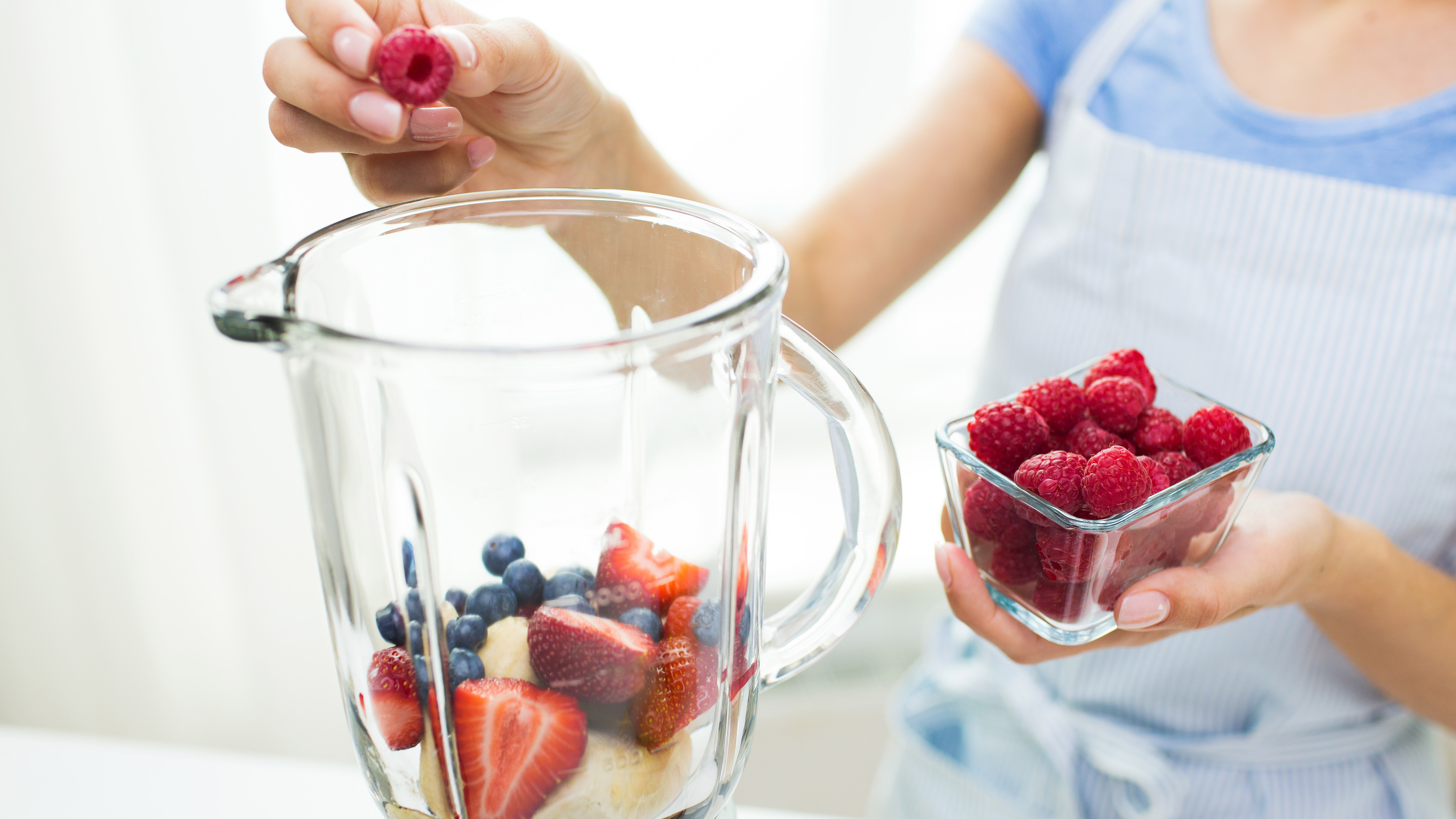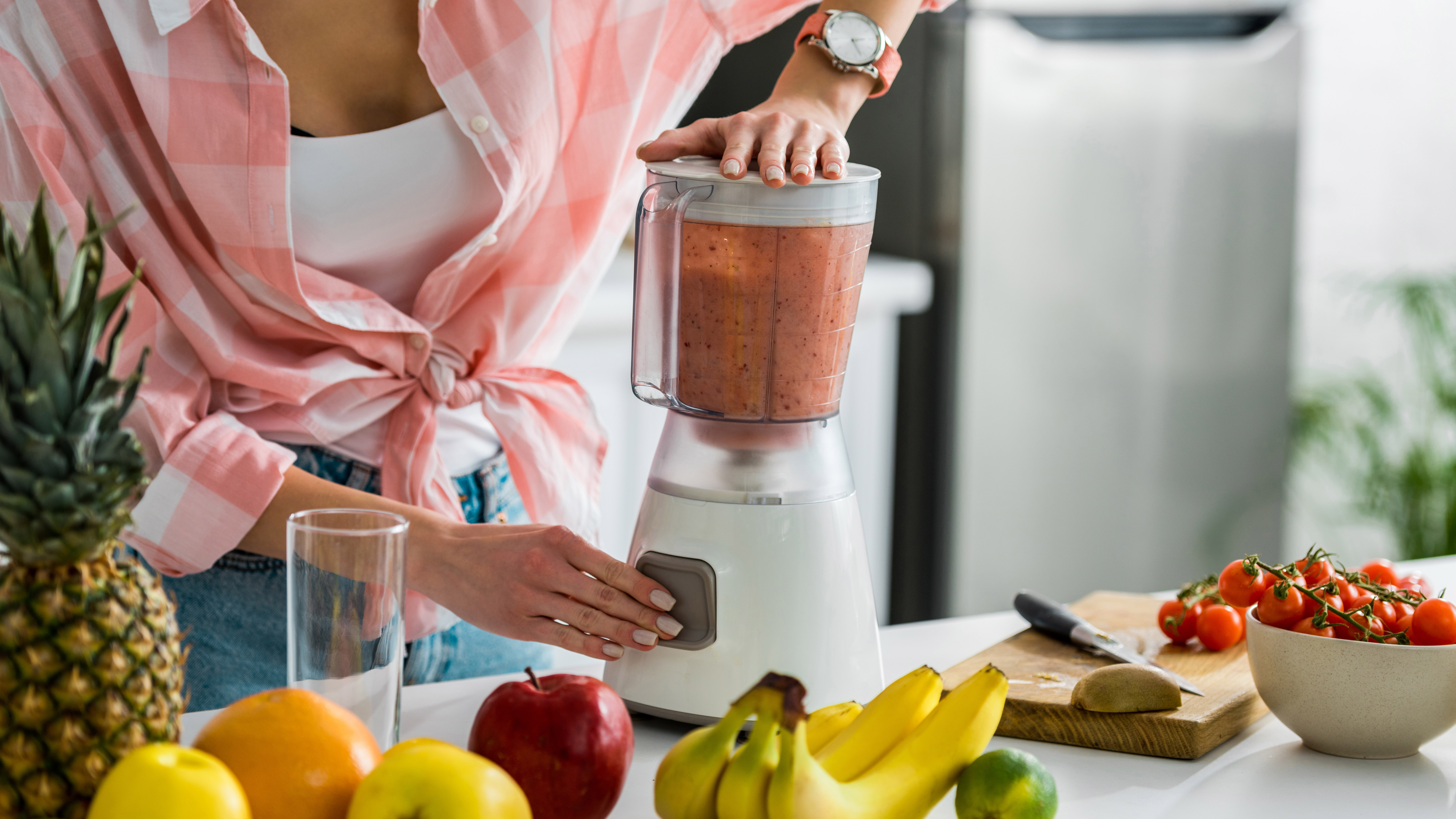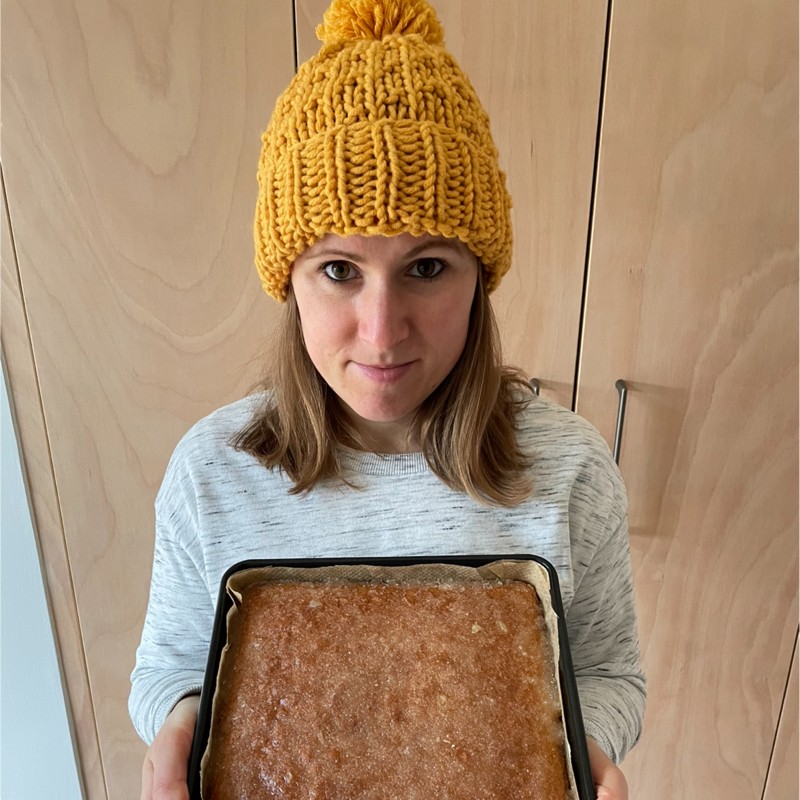Can a blender be used as a food processor?
Do you really need both of these appliances or will one do the job?

There‘s a wide array of kitchen appliances available these days and with some seemingly performing similar functions, do you really need one of everything? Is it possible to save money and space by investing in an appliance that offers multiple functions?
The best blenders are certainly one of the most versatile kitchen gadgets you can lay your hands on. From blitzing fruit and vegetables into a smoothie to crushing ice or making soups and sauces, they can use blades to break down food and can be used for a range of cooking-related tasks.
As food processors also use blades to break down foods, you may be wondering if a blender can double as a food processor? Considering more than 90% of households own at least one personal or full-size blender, according to research by the Association of Home Appliance Manufacturers, it could save a lot of consumers money if a blender can be used as a food processor.
Got your mind set on a blender regardless as to whether it can be used as a food processor? Then check out the best prices for some of our top models.
So, can blenders be used as a food processor?
As much as we’d love to give you a solid yes or no answer to this question, it’s not quite that simple. It really comes down to what delicious creations you’re planning on whipping up in the kitchen. Blenders can perform some of the functions of a food processor but ultimately a food processor has lots more attachments and can be used for a wider variety of tasks.
There are two blades in a jug blender, which sit in the base of the jug. The blades form a cross, with each end bent at an angle. When blending the blades create a vortex, dragging chunks of food down towards the blades, although this does require some liquid to be present - o jug blenders are best for smoothies, and condiments that require liquids to be emulsified.
The blades in a food processor sit at different heights, with one pulverizing the ingredients that sit at the bottom of the food processor bowl, and the other breaking down the food that sits higher up the bowl. As the base of the food processor bowl is flat, there is little chance of a vortex being created, which makes a food processor better for dry ingredients such as combining flour and butter into pastry.
Get daily insight, inspiration and deals in your inbox
Sign up for breaking news, reviews, opinion, top tech deals, and more.
Food processors also come with a number of attachments, while they vary depending on the brand and price, the best food processors usually come with slicing and grating attachments, so you can finely cut vegetables, while also grating everything from cheese to chocolate.
If you’re a regular in the kitchen, you’ll benefit from the many uses of a food processor. However, if you prefer to spend less time prepping meals, a good blender will probably be enough to meet your needs.

What can you do in a blender?
As we’ve already mentioned, blenders excel at producing smooth liquids, so for silky smooth smoothies, milkshakes and soups, a blender is the best appliance. They can pulverize whole or large chunks of foods into liquids, achieving the perfect smooth pureed texture. Some of the best high-performance blenders can be used to make nut butter and even blend frozen fruits into delicious frozen desserts.
A blender will work well for mixing up a pancake or waffle batter but don’t try to use it for anything thicker like a cake batter, for this you’ll need a food processor. Blenders can also be used to make sauces like mayo and pesto or to make smooth salsa, guacamole, and dips. The tall pitcher design of a blender means that sometimes you’ll have to give it a bit of a shake or scrape down the sides so that all the ingredients get combined, but it’ll do the job.
For tasks such as chopping herbs, breadcrumbs, or nuts, a blender can be used instead of a food processor. You won’t necessarily get as much control over how finely or evenly chopped the results are and again for herbs or bread you might need to shake the pitcher or push the ingredients down using a tamper so that they get forced into the blade area. That said, lots of blenders come with mini blending bowls that are particularly useful for blitzing small quantities like chopping nuts, herbs, or blending a quick salsa.
What are the extra functions a food processor can perform?
For seasoned cooks and bakers, a food processor is an invaluable appliance, it can be used to mix up cake batters as well as firmer doughs like pastry, pasta and bread dough. Most come with a whisk attachment, so you can use it to whisk up light and fluffy egg whites or cream, taking the hard work out of these traditionally labor-intensive tasks.
The slicing blade is great for quickly slicing vegetables like potatoes as well as salads including cucumber, carrot or beetroot, providing consistent even slices in seconds. Grater attachments work well for cheese but are also ideal for grating chocolate so you don’t end up with sticky melted chocolate all over your hands like you would if you did it by hand.
Large bowls of coleslaw are really easy to whip up when you’ve got grating and slicing attachments, so you can bring your easy homemade coleslaw to a friend’s BBQ without spending much time slaving in the kitchen.
Food processors have large wide pitchers that accommodate much larger blades than in a blender, this makes them really good at things like turning cookies into cookie crumbs for a cheesecake base. You can also use the blades to grind meat like beef, for homemade burgers.

Should I buy both?
It really depends on what type of cook you are and what you intend to make. There’s no point having both of these appliances if you’re only planning on making the occasional dip or salsa. If you want to be able to make heavy doughs, slice vegetables or grind meats, even the best blender isn’t suited to these tasks so you’ll need a food processor.
Likewise, if you’re a smoothie fan or you want to blitz soups or milkshakes into a smooth consistency, you’ll need a blender, they’re better designed for these tasks and the lids are usually leak proof whereas food processors often don’t have leak proof lids.
There is a compromise though, some blenders like the Nutribullet Magic Bullet Kitchen Express come with a food processor attachment that can perform some of the functions of a food processor. So if you’re really struggling to decide between these two appliances, a hybrid option like this might be the way forward.
- Check out these great Nutribullet deals

Helen is a freelance writer who specializes in kitchen and home appliances, and has written for some of the biggest home-related titles around. She has been reviewing small appliances, including blenders, air fryers, and vacuums for more than 15 years. When she's not busy testing the latest food and home gadgets, she enjoys DIY and gardening.